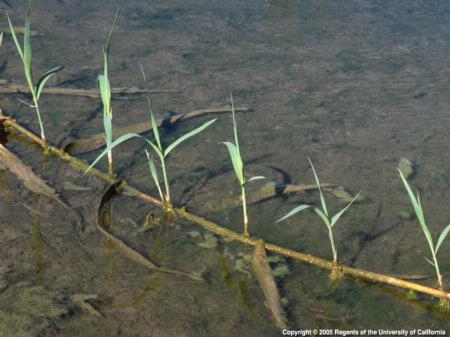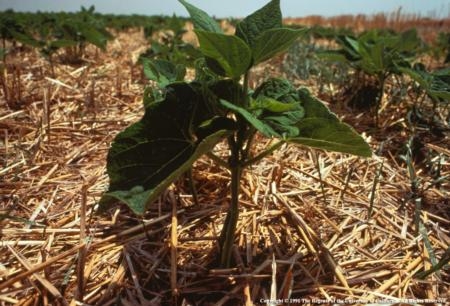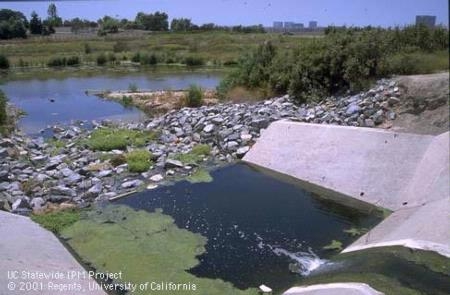
Posts Tagged: local watersheds
Protect Your Drinking Water
Water is essential to life. Clean water supplies require the efforts and cooperation of many. It is our responsibility to learn about this life sustaining natural resource, and take steps to ensure our supply is safe to drink.
The U.S. Environmental Protection Agency (EPA) has an extensive collection of resources to educate the public about drinking water. Titled, Protect Your Drinking Water for Life readers have many topics to explore and a variety to learn about their water supply and takes steps to protect it.
Topics include:
- Drinking water
- Education & training
- Grants & funding
- Laws & regulations
- Our waters
- Pollution prevention & control
- Resources & performance
- Science & technology
- Water infrastructure
- What can you do?
- Adopt your watershed
- After the storm
- Emergency preparedness
- Good Samaritan
- Nonpoint source toolbox
- Pollution prevention
- Protect your health
- Protecting drinking water
- Volunteer monitoring
- Water efficiency
There is also a collection of resources designed for youth, which includes games and activities, and curriculum for teachers.
 Ensuring our water supply is safe to drink is a responsibility we all share. Learn steps you can take to improve the water quality in your watershed.
Ensuring our water supply is safe to drink is a responsibility we all share. Learn steps you can take to improve the water quality in your watershed.
Introduction to Groundwater and Watershed Hydrology: Monitoring, Assessment and Protection
Co-sponsored by UC Cooperative Extension Groundwater Hydrology Program, Groundwater Resources Association of California (GRA) will present an educational opportunity February 28-29 at Buehler Alumni Center, located on the UC Davis campus.
Directed toward a broad audience, the Introduction to Groundwater and Watershed Hydrology: Monitoring, Assessment and Protection short course will be taught by experienced instructors.
From GRA’s website:
“This short course will review the fundamental principles of groundwater and watershed hydrology, water quality, and water contamination. It will provide an overview of the most common tools for measuring, monitoring, and assessing groundwater and surface water resources. And it will review current local, state, and federal programs dealing with groundwater and watersheds. The course is geared towards a broad audience that is involved in the management, assessment, and protection of water resources, either professionally, as an educator, as a stakeholder, or otherwise. Course attendees who may have some experience with, but no formal training in hydrology or related engineering or science fields, will benefit from the basic and intuitive, yet comprehensive approach of this course.”
Scheduled topics include:
• Surface Water Hydrology and Watersheds
• Groundwater Hydrology
• Water Rights and Water Law
• Surface Water Quality
• Groundwater Quality, Sampling, and Monitoring
• Surface Water Contaminants
• Groundwater Contamination
• Defining Watersheds and Groundwater Recharge Areas
• Vulnerability Assessments
• Understanding Potentially Contaminating Activities
• Protecting Water Resources
To register, or for more information, please visit this page of the GRA website.

UC’s Riparian Invasion Research Laboratory
Part of the Marine Science Institute at University of California Santa Barbara, the Riparian Invasion Research Laboratory (RIVRLab) is lead by Tom Dudley. Research projects are focused on a watershed perspective and include studies in ecology, geology, biogeochemistry, and policy.
Projects and studies at RIVRLab include work in local watersheds.
From their site:
"The RIVRLab (Riparian Invasion Research Laboratory) is dedicated to understanding the impacts of non-native species in riparian and aquatic ecosystems, developing methods for their management, and restoring native biodiversity and ecosystem function in western riparian habitats. We feel it is essential to take a multi-species, ecologically-based approach to sustainable invasive species management and environmental restoration, using all appropriate tools in carrying out Integrated Ecosystem Pest Management (IEPM)."
To learn more about RIVRlab and our local watersheds, please visit their informative and well designed site.

USDA’s Natural Resources Conservation Service (NRCS)
Since the 1930’s the NRCS has worked with landowners, community groups, and Federal, state, tribal and local governments throughout the U.S. with planning and implementing conservation measures.
Their overall mission of “Helping People Help the Land” is accomplished through six mission goals:
- High quality, productive soils
- Clean and abundant water
- Healthy plant and animal communities
- Clean air
- An adequate energy supply
- Working farms and ranchlands
NRCS activities include:
- Farmland protection
- Upstream flood prevention
- Emergency watershed protection
- Urban conservation
- Local community projects designed to improve social, economic, and environmental conditions
For more information, Ventura County residents can contact our local NRCS office at 3380 Somis Road in Somis or by calling 805-386-4489.
Funding opportunities and wonderful resources can also be found through the National NRCS website.

English as a 2nd Language watershed education curriculum
Designed to introduce new U.S. residents and other English as a Second Language (ESL) students to the natural environment in central Los Angeles and to foster environmental stewardship, UC’s Water: An English as a Second Language Curriculum for Adults is a wonderful resource to meet these goals.
The curriculum focuses on issues that are relevant to many recent immigrants living in arid, urban situations. It can be used in conjunction with the Teacher’s Edition.
From the author, UC Cooperative Extension Natural Resource Advisor Sabrina Drill:
In 2004, University of California Cooperative Extension, with support from the Rivers and Mountains Conservancy and in collaboration with the English as a Second Language faculty and students at East Los Angeles College, began to develop a curriculum for English language acquisition based on local environmental issues. The driving principle behind this was that awareness, understanding, and stewardship of one’s environment was an important element of membership in a community, and that this understanding would improve both our environment and our communities. Immigrants to the United States should be aware that they have the right to a clean, healthy environment, that there are avenues they can take individually to influence the quality of their environment, and that the decisions made by communities and governments affect that environment…
…When first embarking on this project, we choose to follow the mainstream ESL education community in embracing the concept of English immersion. Hence, all materials are provided in English and can be used in a classroom where a wide diversity of national origins are represented…

